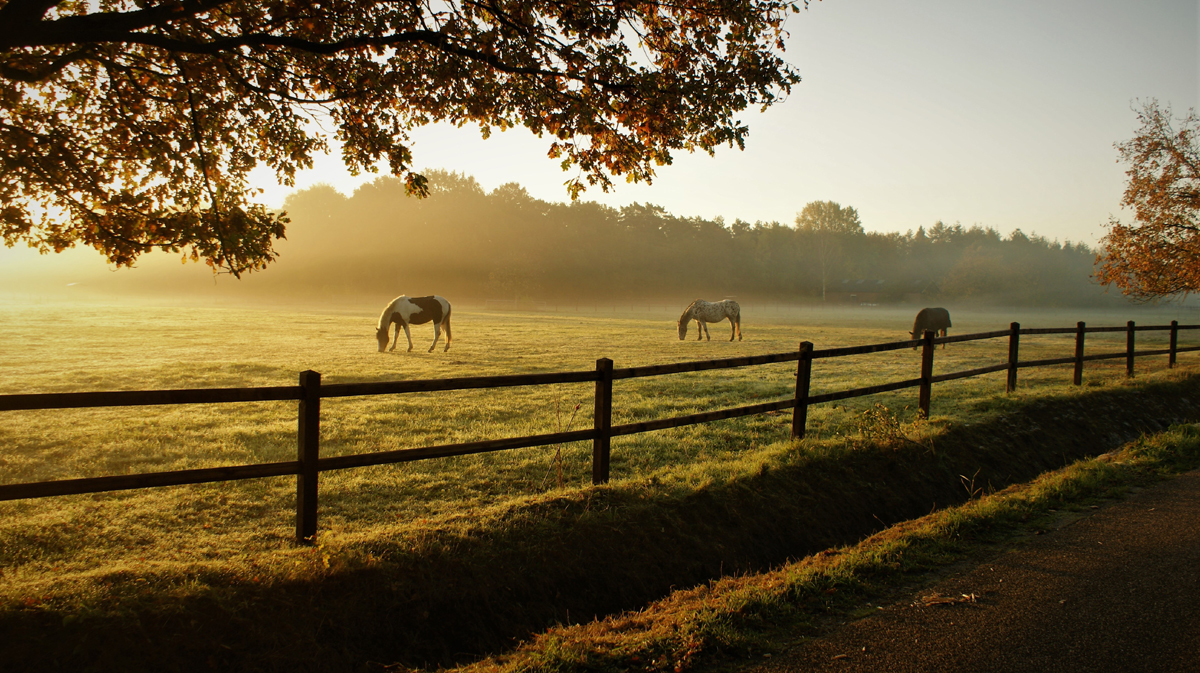Horses have a natural chewing instinct. In the wild, they spend a large portion of each day grazing on grass, herbs and even trees. Unfortunately, there are a few things that can cause a lot of problems.
As an example, horses cannot vomit or burp. If they eat something that upsets their stomach, they will most likely develop colic, which can be a life threatening situation. Signs of colic include excessive rolling and abnormal gut sounds. If you suspect colic, call the vet, then remove all food and water and walk the horse until the vet gets there. The horse will not want to cooperate with the walking, but it needs done.
In order to prevent colic and poisoning, it’s important to be aware of everything around your horse. This includes your pasture, the trees outside the pasture, the barn and the yards. You should also inspect your hay before giving it to the horse. Here are a few examples:
Apple Trees:
Horses love apples, but that doesn’t mean the rest of the tree is safe. The bark, seeds and leaves of the apple tree contain cyanide, which can be toxic. It suppresses breathing and oxygen absorption, which can be deadly. If you have a tree near the pasture, it’s important to make sure none of the leaves, etc. fall into it.
Black Walnut:
Most horses will leave this tree alone, as it doesn’t taste all that good. However, that doesn’t mean it can’t become a problem. The shavings alone, if used in a stall or other area, can cause laminitis, an inflammation of the soft tissue connecting the hoof to the rest of the leg. It doesn’t take a lot, even if ten or so percent is added to the shavings, laminitis could result. It may also be a good idea to avoid having the trees near the pasture, as the plants around it could contain toxins from the tree’s leaves and roots.
Bracken Fern:
There is a constituent in this plant that can reduce the ability to absorbe Vitamin B1, (thiamin). Over a period of time, this can cause a lot of problems for your horse, including depression and lack of coordination. If caught in time, it can be treated with injections of B1, and of course the removal of the plant from the pasture.
Moldy Hay:
While inspecting your hay for possible problem plants, also check for dust and mold. Dust can cause respiratory problems. After long enough exposure to the dust, even good, clean hay could trigger allergies and respiratory problems. Mold can cause colic, and as mentioned above it is life threatening and very painful.
Yellow Star Thistle:
Your horse may avoid this plant if ther is plenty of other food sources around. However, once the horse starts to eat this plant, it will become addicted and begin to seek it out. Unfortunately, yellow star thistle causes brain damage. The area of the brain associated with chewing and swallowing. Very few horses survive poisoning by this plant.
These are a few of the hundred plus plants that could cause problems for your horse. You may want to examine your pasture carefully, and take samples of any plant you don’t recognize to a nursery. They can identify the plants and may even be able to tell you whether or not it’s poisonous. You also may want to keep the number for animal poison control handy, in case you suspect your horse has eaten something toxic. That number is (888)426-4435. This may not be a free call like the center for humans.
The Author:
Mary Bodel is a Master Herbalist. I have learned many beneficial plants, as well as some which are potentially poisonous.
Photo.
Source: EzineArticles.com
